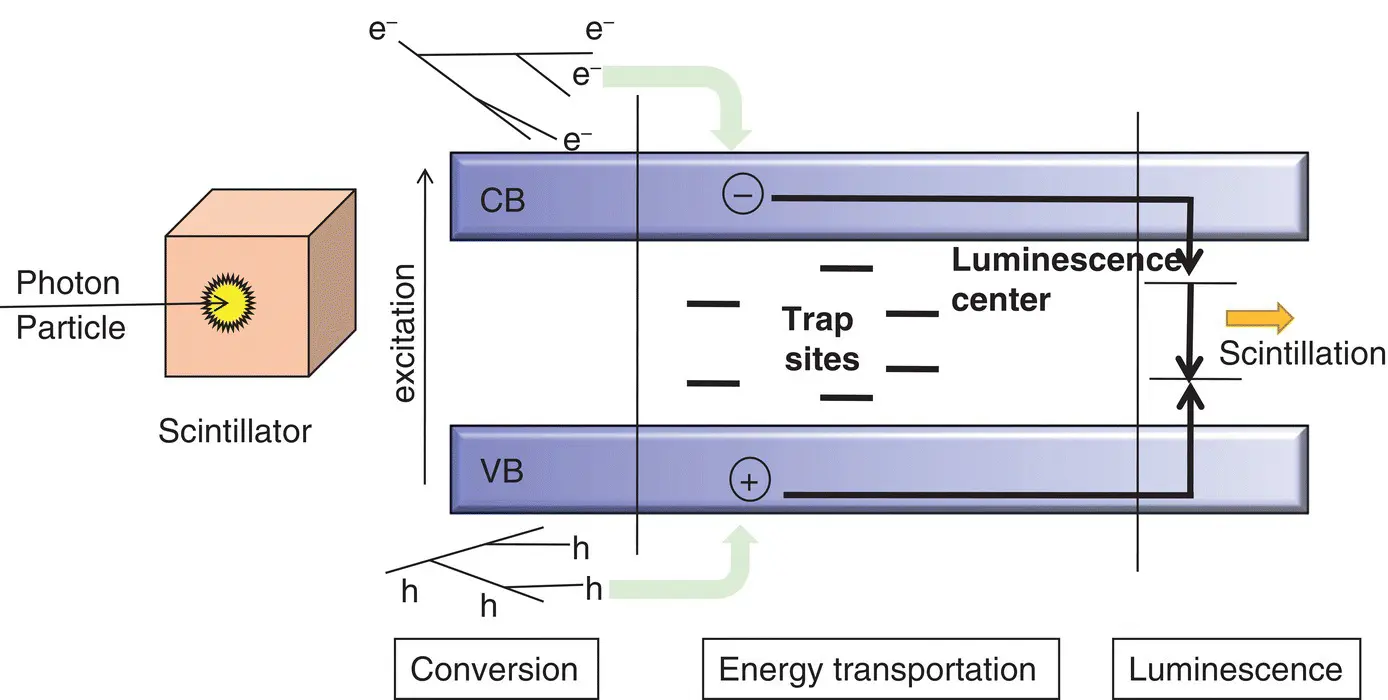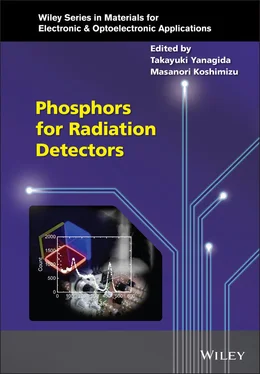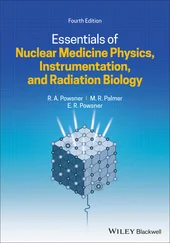Phosphors for Radiation Detectors
Здесь есть возможность читать онлайн «Phosphors for Radiation Detectors» — ознакомительный отрывок электронной книги совершенно бесплатно, а после прочтения отрывка купить полную версию. В некоторых случаях можно слушать аудио, скачать через торрент в формате fb2 и присутствует краткое содержание. Жанр: unrecognised, на английском языке. Описание произведения, (предисловие) а так же отзывы посетителей доступны на портале библиотеки ЛибКат.
- Название:Phosphors for Radiation Detectors
- Автор:
- Жанр:
- Год:неизвестен
- ISBN:нет данных
- Рейтинг книги:3 / 5. Голосов: 1
-
Избранное:Добавить в избранное
- Отзывы:
-
Ваша оценка:
- 60
- 1
- 2
- 3
- 4
- 5
Phosphors for Radiation Detectors: краткое содержание, описание и аннотация
Предлагаем к чтению аннотацию, описание, краткое содержание или предисловие (зависит от того, что написал сам автор книги «Phosphors for Radiation Detectors»). Если вы не нашли необходимую информацию о книге — напишите в комментариях, мы постараемся отыскать её.
Phosphors for Radiation Detectors
Discover a comprehensive overview of luminescence phosphors for radiation detection Phosphors for Radiation Detection,
Phosphors for Radiation Detection
Phosphors for Radiation Detection
Phosphors for Radiation Detectors — читать онлайн ознакомительный отрывок
Ниже представлен текст книги, разбитый по страницам. Система сохранения места последней прочитанной страницы, позволяет с удобством читать онлайн бесплатно книгу «Phosphors for Radiation Detectors», без необходимости каждый раз заново искать на чём Вы остановились. Поставьте закладку, и сможете в любой момент перейти на страницу, на которой закончили чтение.
Интервал:
Закладка:

Figure 1.2 Interaction of typical ionizing radiations with matter.
α‐rays (He nucleus) are common charged particle and have a high interaction probability with many materials, and a thin sheet of paper is enough to absorb these rays. In practical applications, a thin plate with a thickness of a few to several tens of μm scintillators are used as α‐ray detectors, and the most common scintillator for this use is Ag‐doped ZnS [10]. The weak point of the conventional Ag‐doped ZnS powder is poor energy resolution without a clear full‐energy deposited peak in pulse height spectrum. Generally, experimental environments of α‐ray detection contain so much X‐ and γ‐ray background, that detectors with Ag‐doped ZnS have difficulty in discriminating the level of signal and noise. In order to solve this problem, some new approaches were recently proposed [11, 12].
β‐rays are electrons that have higher penetrative power than α‐rays, but they can be absorbed by thin metals such as aluminum plate. For β‐rays detection, organic (plastic or liquid) scintillators are used [13], and organic scintillators are described in Chapter 2. In addition to organic scintillators, some inorganic scintillators are used by the electron detector in scanning electron microscopes (SEM) [14]. In β‐ray detectors, a fast response (rise and decay times) is often required. Because charged particles such as α‐ and β‐rays are easily stopped by detector components, dosimeters for these particles are not common. Recently, the muon has been used for the non‐destructive study of both artificial and natural objects [15], and plastic scintillators are used for muon detectors.
High energy photons, such as X‐ and γ‐rays, are the most useful ionizing radiation in practical applications, and one of their characteristics is a high penetrative power. In order to absorb X‐ and γ‐rays efficiently, we must prepare enough large and heavy materials such as Pb and Fe block. Generally, we use the density ( ρ ) and the effective atomic number ( Z eff) to evaluate the detection efficiency of X‐ and γ‐ray detectors. Here, Z effis defined as
(1.1) 
where w iis the weight ratio of the i ‐th element of the detector material, and Z iis the atomic number (Z) of the i ‐th element. The power in the formula depends on its application. In the case of the scintillation detector, generally we evaluate the detection efficiency by Z eff 4, since the interaction probability of the photoelectric absorption event is proportional to ~ ρ Z eff 4, while we use the power of ~3 (sometimes 2.94) for individual dosimeter applications. It must be noted that Z effin scintillator and dosimeter fields can vary. In scintillators for X‐ and γ‐ray detectors, generally, high ρ and Z effare preferable. On the other hand, light materials with Z effclose to 7.1 are preferable for individual dosimeter applications, because Z effof the human body is around 7.
In the case of neutrons, the tendency is largely that of differently charged particles and photons. Although neutrons have a high penetrative power when applied to paper, thin metal plate, and heavy block, they have a high interaction probability with H, so H 2O is an effective material to interact with neutrons. In neutrons, some specific elements, such as H, 3He, 6Li, and 10B, have a high interaction probability, and in order to detect neutrons efficiently, and detector materials should contain these elements. Especially, a 3He‐filled gas proportional counter is the standard detector for thermal neutron detectors.
1.3 Scintillation
1.3.1 Energy Conversion Mechanism
Figure 1.3shows typical emission mechanisms of a scintillator assuming a combination of the host and the dopant for the luminescence center. When the incident ionizing radiation is absorbed by the ionizing radiation‐induced luminescent materials, many secondary electrons (i.e., δ‐rays, or carriers in a semiconductor field) are generated via electromagnetic interaction such as Coulomb scattering. In the case of X‐ or γ‐ray irradiation, one primary electron is generated by one of the three interactions, including photoelectric absorption, Compton scattering, and pair creation, and the primary electron can excite many secondary electrons. In spite of the species of the incident ionizing radiation, many secondary electrons are generated, and the number of them is proportional to the incident energy of the ionizing radiation if we assume the irradiation of a single quantum. This first process is called the conversion process, and the typical time scale of this process is extremely fast (as ~fs). After the generation of a large number of secondary electrons, these electrons dissipate their kinetic energy via the interactions with each other or the host lattice. If some electrons can directly reach the dopant sites (luminescence centers), they can recombine with the holes, and we can observe an emission. This process is a diffusion process of secondary electrons, and is called an energy transportation process with a time scale of ps. In addition to the recombination, some secondary electrons directly excite the electron at the luminescence center, and we can also observe an emission by the relaxation of this excited electron at the luminescence center. Emission caused by these processes is called scintillation, and this final stage is known as the luminescence (or emission) process. The time scale of the luminescence process depends on the emission mechanism or dopant ion. For example, if the dopant shows a 5d‐4f transition, a typical time scale is several tens to hundreds of ns.

Figure 1.3 Typical emission mechanisms of scintillation.
The final process of the scintillation is the same with photoluminescence (PL), and we may have a question about the difference of the scintillation and PL. Although no standard definition has been put forward, we (the authors of this book) consider that the interactions of excited secondary electrons is necessary for scintillation. In PL, generally one UV or Vis photon can excite one electron in the outer orbital, and we observe an emission by the relaxation of this excited electron. In this case, the excited electron does not interact with other electrons. In the case of the direct band‐gap excitation of semiconductor‐type phosphor, the interaction of the excited electron with other electrons may be possible. But typical UV or Vis excitation energy is not so high, and the excited electron does not have enough energy to interact with the other electrons in most cases. Thus, the excitation of multiple electrons by quanta and interactions of these multiple electrons will be the main difference of scintillation with PL. In other words, if we consider typical insulator or semiconductor materials, at least several tens of eV of excitation energy will be required to cause scintillation, and excitation below this energy will be PL. Of course, the threshold energy of scintillation and PL depends on the materials used. In the case of small band‐gap materials, the excitation energy of several eV may be enough to cause scintillation.
Читать дальшеИнтервал:
Закладка:
Похожие книги на «Phosphors for Radiation Detectors»
Представляем Вашему вниманию похожие книги на «Phosphors for Radiation Detectors» списком для выбора. Мы отобрали схожую по названию и смыслу литературу в надежде предоставить читателям больше вариантов отыскать новые, интересные, ещё непрочитанные произведения.
Обсуждение, отзывы о книге «Phosphors for Radiation Detectors» и просто собственные мнения читателей. Оставьте ваши комментарии, напишите, что Вы думаете о произведении, его смысле или главных героях. Укажите что конкретно понравилось, а что нет, и почему Вы так считаете.












